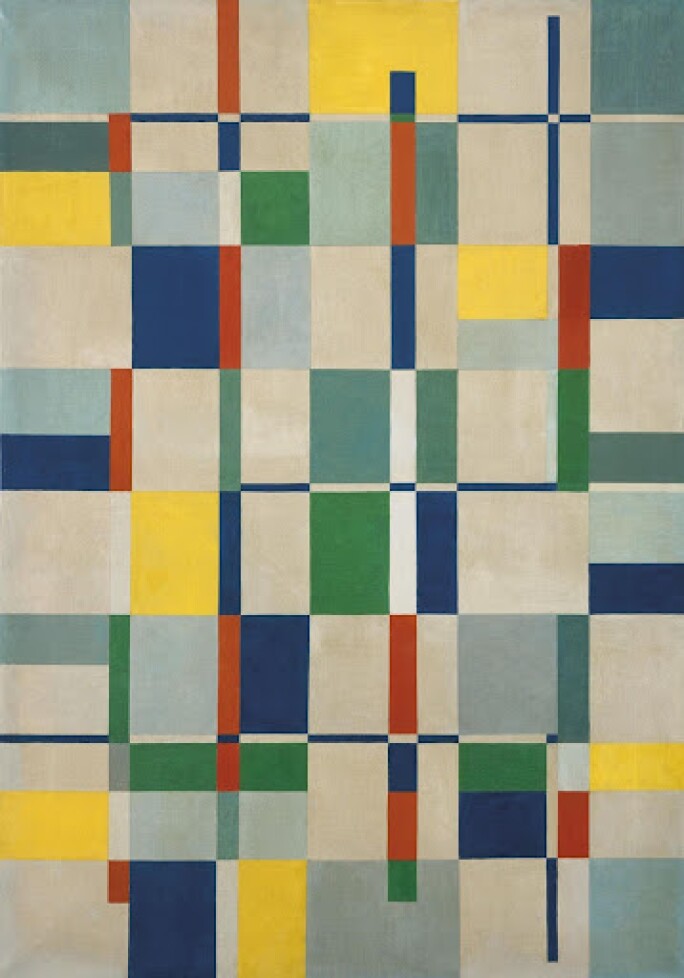B ursting with color, technical prowess and symbolic complexity, Queimadinho encapsulates the uniquely expressive style that has made Beatriz Milhazes one of the most celebrated contemporary artists in Brazil.
In the prodigious composition, crisp layers of bold geometric patterns and smooth floral motifs are superimposed on top of each other along a central vertical axis. A kaleidoscopic rhythm, created by the surface’s intermingling layers, immerses the viewer like an expressive tapestry. To produce this effect, each layer of the composition is painted onto individual plastic sheets by Milhazes and then transferred to a linen surface once dry. The final result of this unusual multi-step process evokes the multilayered yet smooth surface of a collage.
A distinctly Brazilian vernacular can be traced in Queimadinho. Vibrant botanical patterns resemble traditional chitão fabrics, the flora of Tijuca forest and folk art imagery. Saturated blues, yellows and oranges harness the energy of Rio de Janeiro’s “carnaval.” The work’s angular construction recalls the geometric abstraction of Brazilian Neo-concretists such as Lygia Clark.

A student of the famous Parque Large Art School, Milhaze has exhibited in Rio de Janeiro, Berlin, Los Angeles, London, Paris, and Hong Kong. In 2003, Milhazes represented Brazil at the Venice Biennale. Her work belongs in the permanent collections of international museums including the Metropolitan Museum of Art, Guggenheim Museum, Pérez Art Museum Miami, Fondation Beyeler, and the Museo Reina Sofía.

